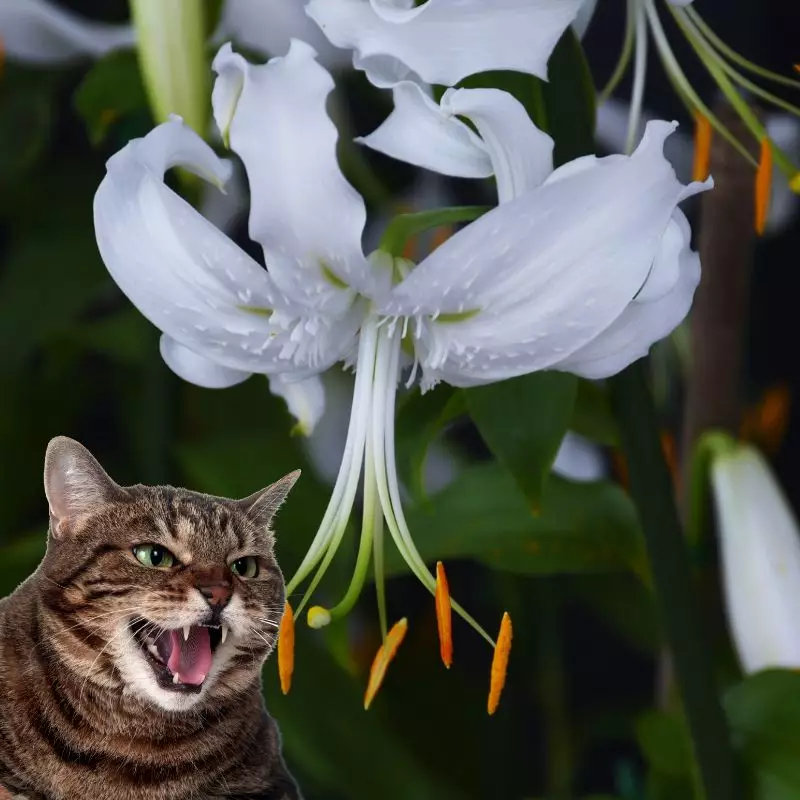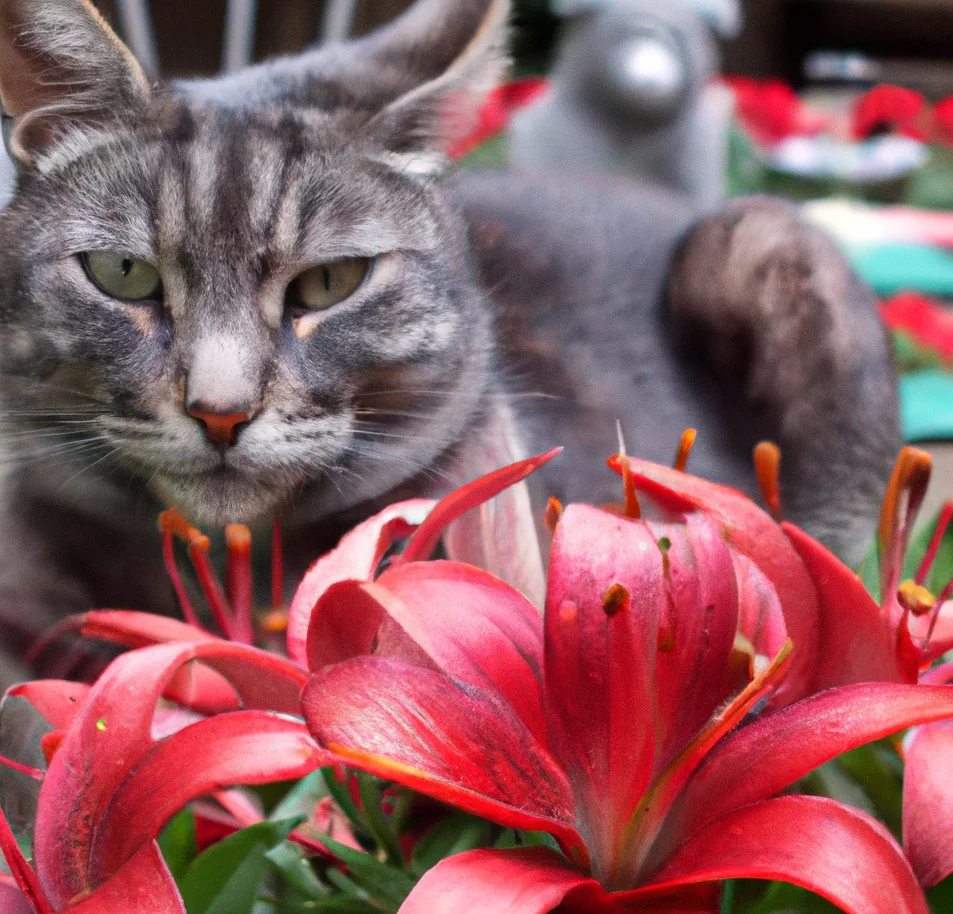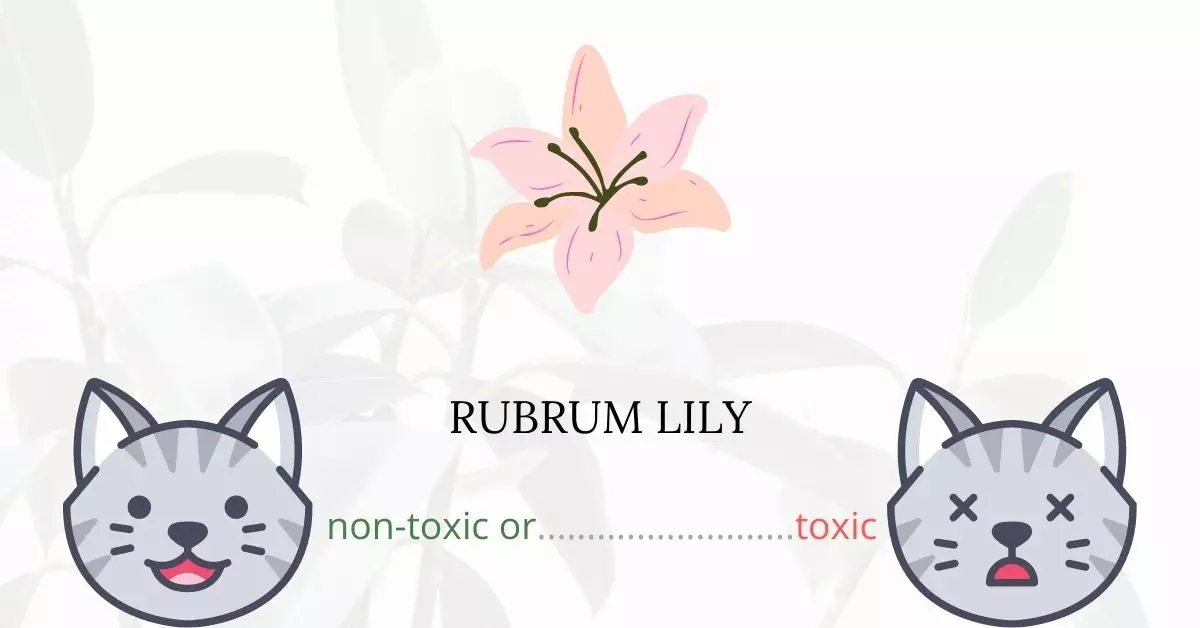Rubrum Lilies indeed pose a severe toxic threat to cats.
This article is an endeavor to present factual and updated information on the hazards associated with Rubrum Lilies and their repercussions on cats. Our work is a culmination of detailed research, conducted in collaboration with a group of esteemed Doctors of Veterinary Medicine (DVMs). Their extensive experience and insights have been crucial in outlining the precise risks related to various flora, focusing primarily on Rubrum Lilies in this context. Additionally, to ensure the accuracy and reliability of our information, we have consulted high-authority sources such as ASPCA and PetMD for each plant discussed.
The toxicity of Rubrum Lilies to cats is comprehensive, affecting every part of the plant. The specific nature of the toxin remains somewhat elusive; however, ingestion of any part of the lily can cause severe illness in cats. Even a single bite can lead to significant health deterioration, and without timely intervention, it can unfortunately be fatal.
Clinical Signs of Rubrum Lily Poisoning in Cats

The actual toxin in Rubrum Lilies that induces poisoning in cats remains unidentified, making any contact, inhalation, or ingestion of the plant extremely perilous for them. The toxicity predominantly emanates from lilies belonging to the Lilium or Hemerocallis species, which can prove to be fatal for cats without immediate veterinary attention post-exposure.
When a cat interacts with or consumes any part of a Rubrum Lily, symptoms of poisoning typically manifest between six to twelve hours, each indicative of internal disruptions caused by the plant’s toxic properties:
- Vomiting: This occurs as the cat’s body attempts to expel the ingested toxic substances present in the lily.
- Loss of Appetite: The ingested toxins can induce gastrointestinal discomfort, leading to a decreased desire to eat.
- Lethargy: This is a sign of the body’s response to the toxins, demonstrating a decrease in energy levels and responsiveness.
- Dehydration: Resulting from vomiting and decreased fluid intake due to loss of appetite and excessive urination, leading to the cat’s body losing more water than it is taking in.
- Excessive Thirst or Lack of Thirst: Either of these can occur due to renal impairment caused by the toxins affecting kidney function.
- Excessive Urination or Lack of Urination: These opposite symptoms can also arise due to kidney dysfunction induced by the toxins.
- Disorientation: This occurs as the toxic substances may affect the cat’s central nervous system, leading to confusion and impaired coordination.
- Inability to Walk: Resulting from the toxins impacting the cat’s neurological and muscular systems, causing weakness and loss of coordination.
- Seizures: Indicative of severe neurological impairment, seizures are a sign that toxins are affecting the brain’s normal functioning.
- Ulcerated Gums: The toxins may cause lesions or ulcers in the mouth, indicative of oral irritation and inflammation.
- Tremors: These involuntary muscle movements are a sign of neurological damage caused by the toxins.
- Renal Failure: The most severe consequence, renal failure occurs when toxins irreversibly damage the kidneys, hindering their ability to filter waste from the blood effectively.
Immediate veterinary intervention is crucial when any of these signs are observed, to optimize the chances of recovery and prevent long-term damage or fatality.
First Aid and Treatment of Rubrum Lily Poisoning in Cats

When your cat is no longer in severe condition, the team at your vet’s office will work rapidly to assist clear any lingering harmful chemicals in their stomach. To accomplish this, your veterinarian will induce vomiting in your cat. Then, using the tube procedure, your vet may provide activated charcoal to your cat. Many harmful compounds will be absorbed by activated charcoal, allowing them to pass harmlessly through your cat’s digestive tract. Additional fluids will be supplied, and your cat’s vital signs and organ function will be continuously monitored.
Recovery from Rubrum Lily Poisoning in Cats

When rubrum lily poisoning is detected early, your cat has an excellent chance of recovery. Poisoning can cause long-term or short-term organ damage in some animals. These disorders can be treated with specific drugs and regular blood tests at your veterinarian’s clinic. Unfortunately, lilies are extremely poisonous, and in severe situations, death may occur. Rubrum lily poisoning is a dangerous condition. How fast your cat receives medical treatment will determine how well he or she recovers in the long run.
Prevention of Rubrum Lily Poisoning in Cats
Keeping rubrum lilies out of your house and yard is the greatest way to keep your feline companion safe. Remember to leave out the lilies when purchasing flowers or ordering them for delivery. It is best to urge florists not to include any lilies in the Lilium species. Providing florists with the scientific name of the flower species might help them avoid misunderstanding.
If you love plants but have cats at home, check out these lists:





